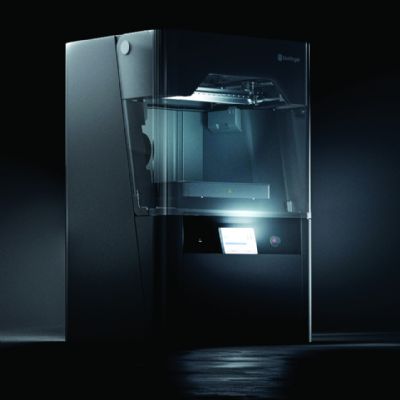Consider, for example, Project DIAMOnD, developed by Automation Alley, Michigan’s Industry 4.0 knowledge center, in collaboration with Microsoft’s Azure cloud technology and Markforged. This initiative will provide more than 300 manufacturers in Michigan with Markforged 3D printers, with the goal of building resilience and agility in the state in two ways:
- By enabling local manufacturers to become more digital, flexible and resilient against challenges to local business continuity. Manufacturers can print parts to meet their own needs and remain productive regardless of the state of global supply chains.
- By allowing the Michigan government to tap into a network of manufacturers that can print emergency parts, such as PPE, on demand.
Project DIAMOnD is poised to become the world’s largest emergency response network for printing parts on demand, as well as the largest 3D printing network to date. This project represents just one example of how manufacturers are beginning to rely more heavily on AM, and demonstrates the exciting potential of collaborative, multi-node networks for instantaneous production. The ongoing “in it together” mentality will be critical as we respond as a community to future disruptions.
2. The Power of a True Platform
Another trend that became clear in the wake of COVID-19 is that, throughout the industry, more manufacturers are looking to invest in digital solutions that work hand in hand with hardware. Previously, manufacturers often would overlook the value of software in AM and make the mistake of only focusing on the hardware component. But now, after COVID-19 encouraged a swift adoption of Industry 4.0 technologies, manufacturers have realized that through one cohesive platform, they can bring any part from design to production in a seamless process.
With software and hardware working together, manufacturers can find real value. The combination of powerful in-print sensors and a large fleet of cloud-connected printers unlocks unparalleled potential to improve quality and expand the kinds of problems that can be solved with a 3D printer. Cloud software allows printers to learn and become smarter with each print job by making manufacturing machines more ‘aware’ through connected builds and sensors. Manufacturers also can use software for automated part validation. As a result, manufacturers that use platforms combining software with hardware make their factories smarter and more efficient, which accelerates time to market and reduces the cost of production.
Having one cohesive software and hardware platform that supports the entire part-production process enables manufacturers to be more agile and efficient, driving competitive advantages amid crises and beyond.
3. Owning Your Supply Chain
If the disruptions caused by the pandemic have taught us anything, it’s how fragile supply chains can be―especially those that have been optimized for cost at the expense of responsiveness. If a single node of a supply chain became delayed, it had a domino effect across supply sources, logistics chains, central manufacturing hubs and distribution. As a result, manufacturers have started looking for new ways to simplify their supply chains, eliminating some of the risks associated with complexity and by bringing more of the production inhouse—often by using AM.
With 3D printers now powering production, manufacturers can save time and money by 3D printing tools or spare parts on demand, at their own convenience and on their own manufacturing floor. This capability empowers manufacturers to be better prepared to control and manage future supply-chain disruptions.
There never has been a more crucial time to invest in the right technology. This year we will see the investment in AM technology continue to rise as manufacturers begin to recover from the pandemic. While the pandemic was a tough wake-up call for an industry burdened with heavy inertia and resistance to change, it certainly sparked much-needed innovation. Although this past year has been difficult for many manufacturers, 2021 and beyond hold incredible potential for the future of AM. 3DMP
See also: Markforged
Technologies:
 Daniel Lazier
Daniel Lazier With supply chains disrupted, the race was on to remediate production shortages in any way possible, leaving manufacturers to find new strategies overnight, while remaining flexible enough to scale up and respond to new demand signals.
With supply chains disrupted, the race was on to remediate production shortages in any way possible, leaving manufacturers to find new strategies overnight, while remaining flexible enough to scale up and respond to new demand signals.






